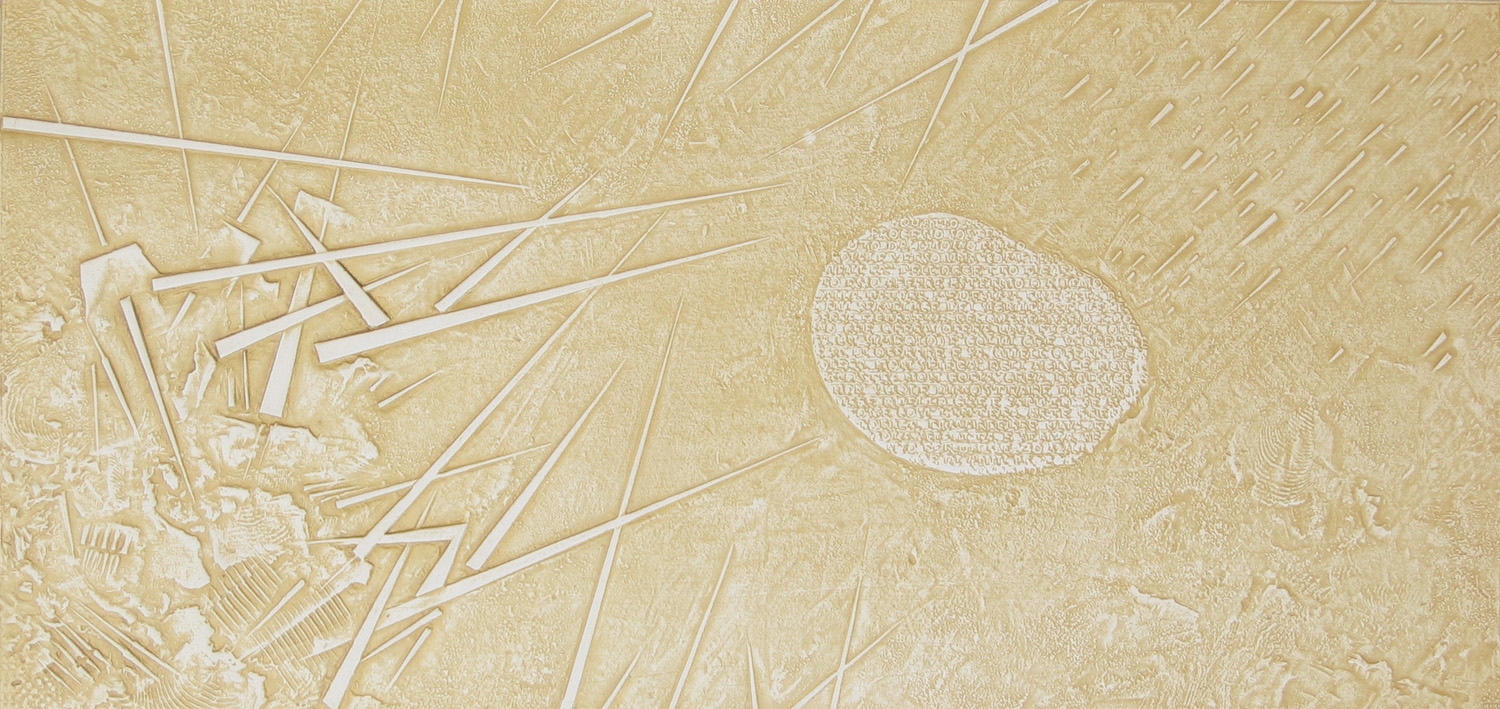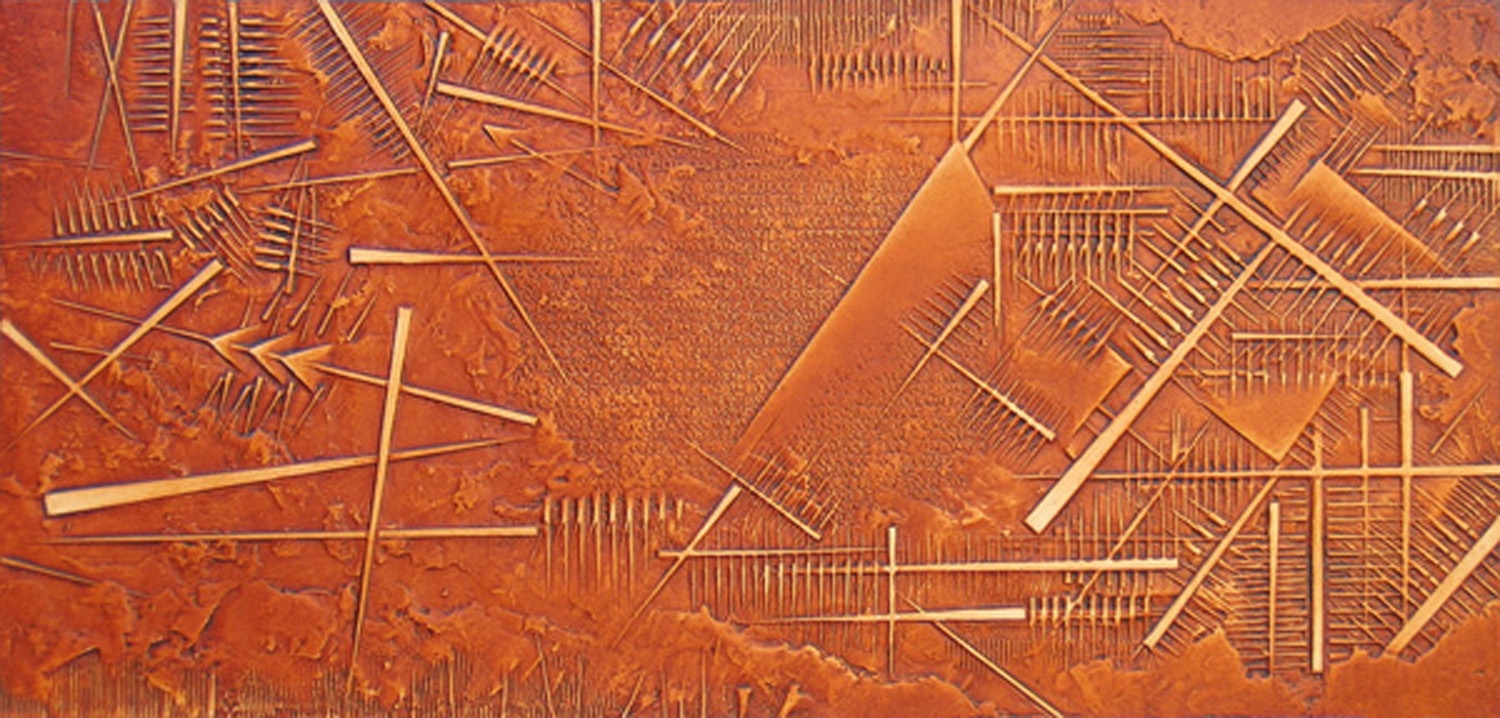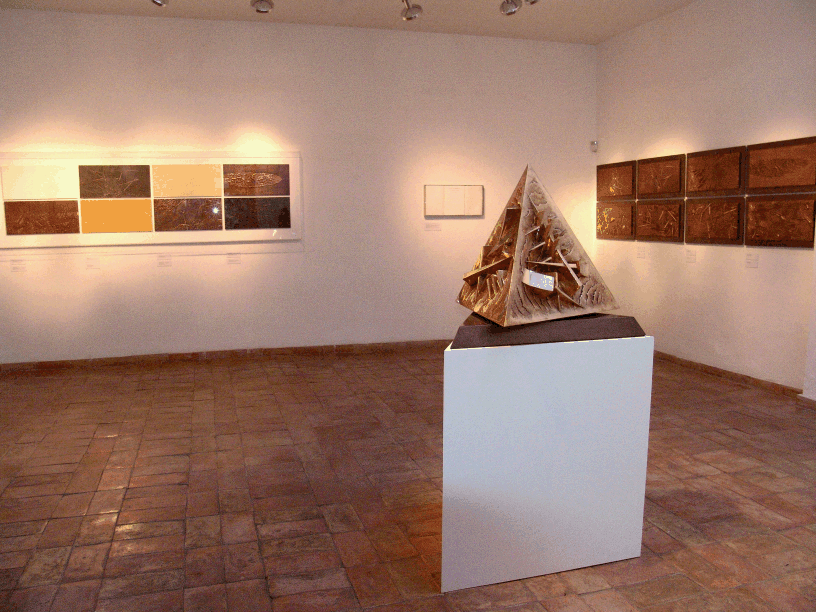Arnaldo Pomodoro
Fragments
scultures and graphic works
2RC Rome - 2005
After a long collaboration with the artist Arnaldo Pomodoro, which dates back to XNUMX, XNUMXRC Edizioni d'Arte is pleased to present the book Frammenti, produced on the occasion of the XNUMXth anniversary of the “Cento Amici del Libro” association. In these XNUMX years the Association has published XNUMX volumes with texts by classical writers.
The present print of seven fragments has been extrapolated from "The art of primordial man", a text by Emilio Villa dating back to the sixties. On the one hand, the work, drawing on an unpublished text, documents the arguments with which Villa aimed to grasp and sustain a contiguity between archaicity and actuality, between the representations left to us by prehistoric man and the creations of the modern artist, beyond beyond any chronological distance and any disciplinary fence; on the other hand, thanks to Pomodoro's superb chalcographies, he builds a tangible example of the fecundity of Villian's hypotheses. In these pages, the exploration of prehistory becomes inseparable from that aimed at highlighting the complexity of the relationship that binds our present to the most remote past.
In 2002 Pomodoro created 7 bronze bas-reliefs, inspired by this project, which will accompany the book within the exhibition.
From the volume Seven Fragments edited by Aldo Tagliaferri:
Facing the arduous task of adhering to the Villian theses without falling into the symbolic atrophy they stigmatize, Arnaldo Pomodoro took them at their word, that is, he translated them in terms of a sign horizon that enhances the material and plastic values but, at the same time, it claims for itself full autonomy from any knowledge that is claimed to be absolute and conclusive. The sign of Pomodoro alludes to both the "primordial" and the "modern" one and in this double reference it finds its energy, while measuring itself against the paradox from which great artists of every age have taken their steps: the total fullness of meaning a code of which we ignore a sign is impossible, but it is constitutive of the sign that we define artistic to act, to produce possible senses, despite the non-presence that this sign implies. And to elaborate in his own way the cosmic inspiration that crosses the seven fragments, to combine the paradigm of the visible with that of the invisible, Pomodoro coherently takes possession of Villian textuality by "sacrificing" it, transforming it into a visual event, that is, inventing a space in whose matter, sign and writing inextricably condition each other. The dazzling and solemn effect that Pomodoro reaches updates and develops the theme of "nourishment" by articulating in distinct epiphanies but also supported by a dense network of correlations that gathers them, and ultimately knots them together, according to a unitary design. In short, the final result follows from the synergy of primordial and villian “symbolic signals”, on which the artist has been able to graft the powerful stylistic value of his own personal sign.


















